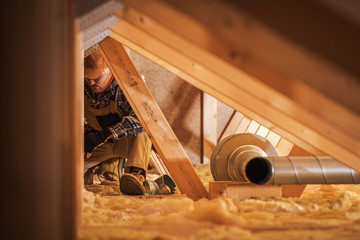Spray Foam insulation is an environmentally friendly building material. This type of insulation is made with HFO (hydro-fluoro olefin) blowing agents, which have a GWP of 1 or less. It is also more efficient than traditional blown-in insulation so you can expect significant energy savings. Each kilogram of HFCs released into the atmosphere equals about 3.4 tons of carbon dioxide.

Attic Insulation is a very effective way of keeping homes warm during the winter months and cool during the summer months. Homeowners may choose to install both types, or they may decide to purchase one and then install the other. Most homeowners who install either type find that they both work very well. However, there are a few things to remember when choosing between these two heating options.
Another benefit of spray foam is that it will keep the temperature consistent inside the house. This is because spray foam will seal the building envelope. This will prevent any air leaks, which will help reduce energy bills. Adding spray foam insulation to your home will keep your home comfortable and save you money on your energy bills. It can even be applied to the attic. It’s the perfect choice for homeowners who want to reduce their energy bills.
When choosing to spray foam insulation, choose the material that best suits your home’s purpose. The density of the spray foam will determine the R-value, which indicates how well it will resist heat, moisture, and drafts. You can choose between open-cell foam and closed-cell foam. Closed-cell foam is denser than open-cell foam and easier to work with.
Spray foam insulation is a very affordable option, especially for smaller areas. You can also purchase Gaps and Cracks (16 oz cans) to save money on shipping costs. Another option is to buy the product online. Search for “spray foam insulation,” and you’ll find a list of online retailers that offer it.
Spray foam is an excellent air sealer and insulator, making it a good choice for homes and other structures. It can even be used in tough-to-reach areas. Spray foam is also a great option for retrofit jobs. However, consult an expert if you need clarification on whether it’s right for you.
Although spray foam insulation is eco-friendly, it still has some risks. Exposure to a chemical compound that is released into the air after it cures is dangerous. For example, if you get inhale the vapor from the foam, you could get sick. Side B contains chemicals that can cause cancer, including benzene and chloride. Also, it is known to emit dioxins and furans.
Spray foam insulation is not expensive and does not require much labor. It can reduce utility costs, which is good news for homeowners. It costs about $1,284 to $3,741 to have your home insulated. The cost depends on the type of spray foam insulation used, the size of the wall, and the amount of insulation needed.
If you have a large project, you can choose to do it yourself or get a professional installer. The process is usually quick and easy, so it is ideal for those who want to save money and time. Just remember to use the correct protective clothing! You should consult a professional if you need more clarification about the process. This will ensure that you receive the most efficient results. When it comes to insulation, the higher the R-value, the better!
Another advantage of spray foam insulation is its energy efficiency. Unlike traditional fiberglass insulation, spray foam is very easy to apply. This material can expand up to 100 times its size, preventing drafts and lowering energy bills. You can even use it on your roof. Its energy-efficient properties make it a popular choice among homeowners. There are many types of this material, so you’re sure to find the perfect one for your home.
Although most people think of spray foam insulation as a product used on walls and floors, there are two other uses. One use is for apertures, such as crevices between tiles, sinks, and countertops. These areas tend to get cold more quicker during the summer, so homes with little or no insulation must work harder to keep their temperatures comfortable. Another use is in the bathroom. Since this product can form a barrier between water pipes and fixtures, homeowners may want to consider both types. Using polyurethane in either of these places can insulate better and spend less time worrying about the elements.
